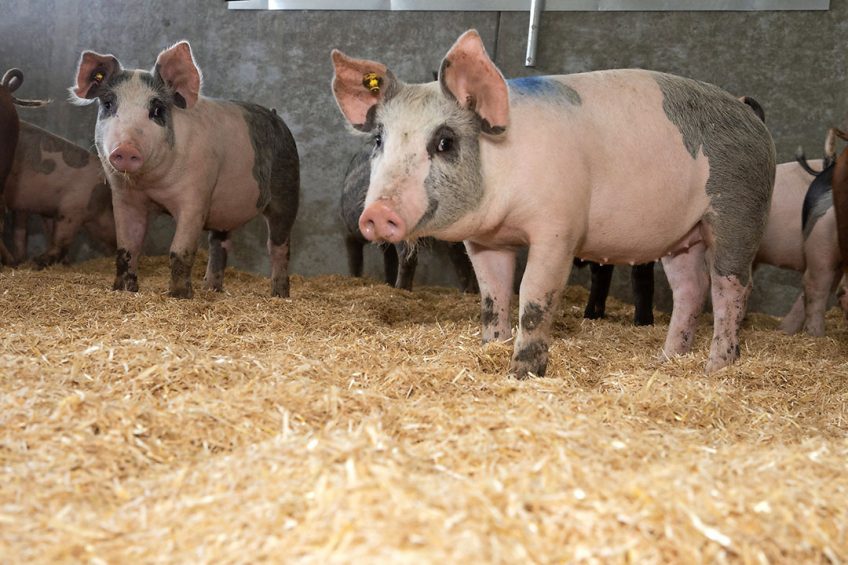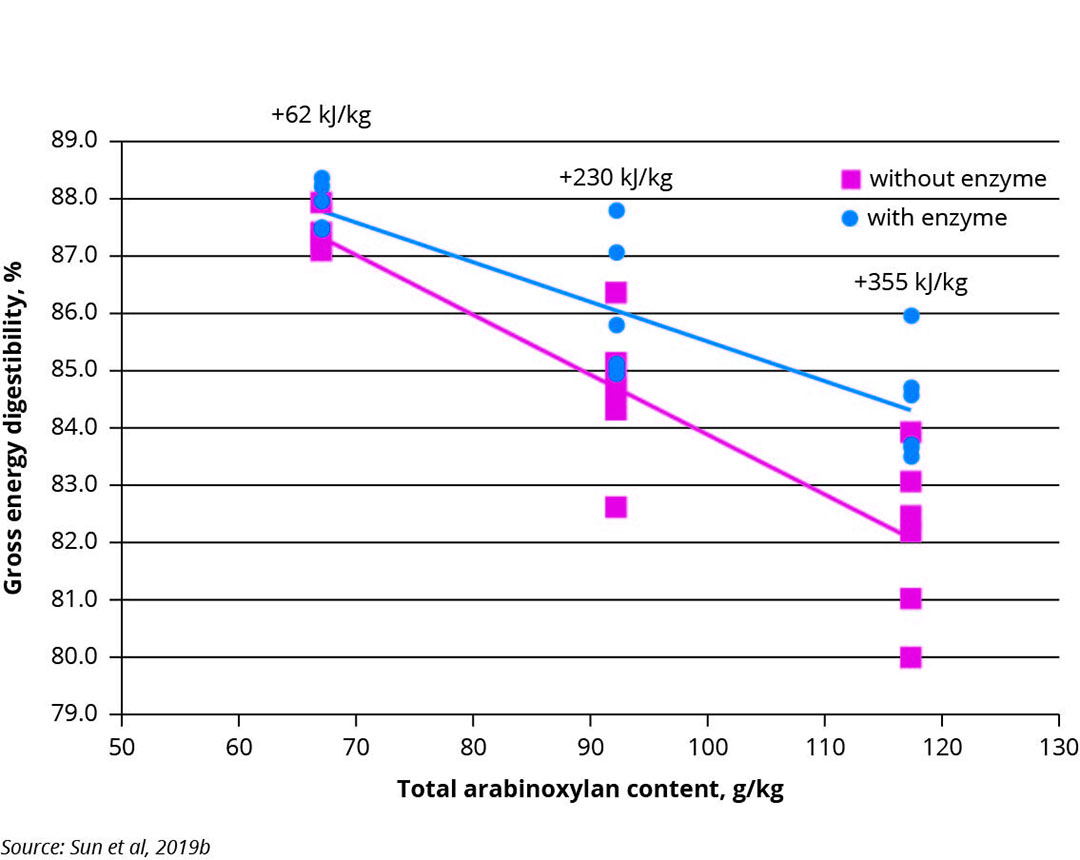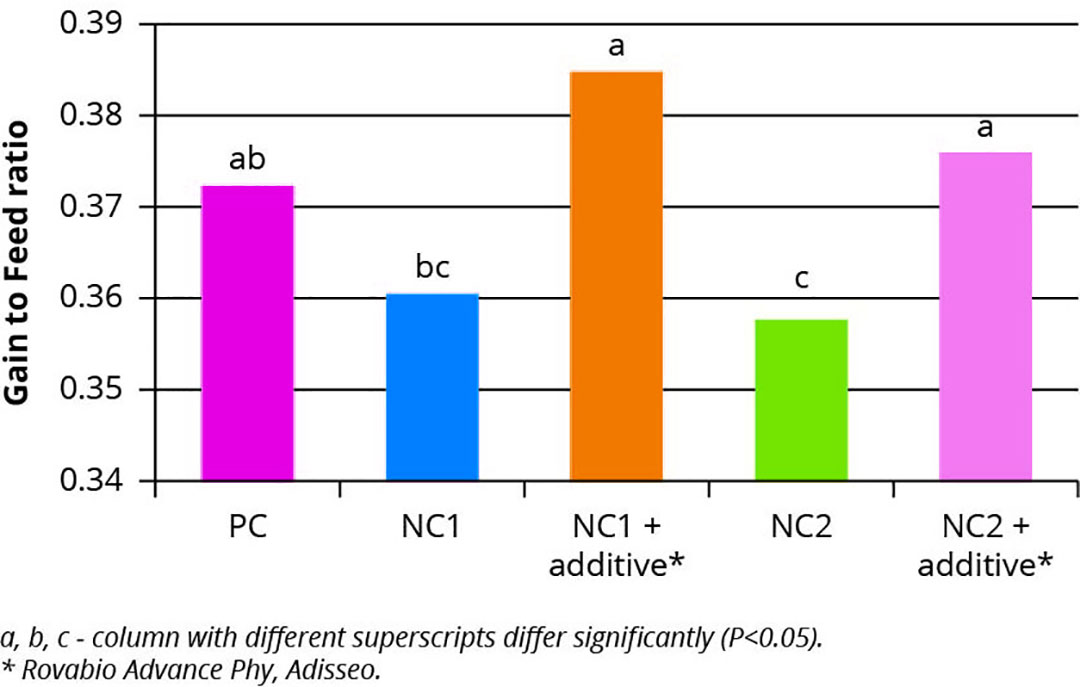Carbohydrase and its impact on pig performance

The aim of modern pig production is to optimise performance and gain, while seeking a more sustainable way of production. With feed taking up the lion’s share of production costs, it makes sense to get the most out of what is fed. An enzyme can help optimise feed usage – and multiple enzymes can reinforce each other.
Of all enzymes used, phytases and carbohydrases are the most regularly added to pig diets. Phytase degrades phytate, releasing phosphorus and avoiding the formation of complexes with proteins and minerals. This in turn improves digestibility and increases nutrient absorption, significatively decreasing phosphorus excretion.
A multienzyme complex has proven to be very useful
Phytases are already well described; this article focuses more on the carbohydrases, or enzymes able to cut carbohydrates into simpler sugars, and their combined effect with phytase. The most well-known carbohydrase is xylanase, which acts on certain arabinoxylans.
For pigs consuming a cereal and soya-based diet, supplementing a multienzyme complex has proven to be very useful. A multienzyme complex consisting of different types of enzymes, for instance a multicarbohydrase plus a phytase complex (MCPC), can better improve the global digestibility of feed and therefore increase the energy and amino acids release.
Using combinations of carbohydrases
Carbohydrases in pig production are important because pigs are not able to degrade the fibre structures present in plant cell walls well, in particular non-starch polysaccharides (NSPs). Soluble NSPs, including β-glucans and arabinoxylans, affect the viscosity of the digesta, reducing the ability of digestive enzymes to reach their target substrate and in turn affecting nutrient absorption. Insoluble NSPs reduce the general digestibility of the diet, increasing the loss of nutrients.
An example of this is a multicarbohydrase complex, useful as a solution to the aforementioned NSPs. They are known to degrade several complex β-glucans and arabinoxylans found in cereals – reducing their antinutritional effects. Its addition to pig diets has been shown to increase the digestibility of protein and dry matter in a more consistent way.
It is not hard to imagine the opportunities when the following carbohydrases are used together:
- Debranching enzymes like arabinofuranosidases improve the enzymatic activity of carbohydrases on the arabinose side chains of arabinoxylans, which are the most common type of fibre in wheat and corn (7.3% and 4.7% of dry matter, respectively).
- β-glucanases in lower proportion for common diets also bring an extra factor to reinforce the consistency of the results.
- As a result of the first 2 modes of action, xylanases have better access to the xylose backbone for hydrolysis.
The synergistic activity of these enzymes means that NSP breakdown is increased and the antinutritional effects reduced, improving the digestion process and boosting the overall efficiency of the diet.
Feedase effect
The overall outcome of combining enzymes is what Adisseo has come to describe as the “Feedase effect”, that is, the effect on digestibility by several exogenous enzymes used simultaneously, coupled with an increase in energy and nutrients release. In other words, it is the total effect of the multienzyme on both substrate and the animal itself in terms of digestion and gut health, resulting in better performance.
Figure 1 – The addition of feedase increases gross energy digestibility in diets with increasing arabinoxylan content.

Antinutritional impact of dietary fibre
A recent study investigated the specific effect of arabinoxylan content and enzyme addition on feed digestibility in finishing pigs. The experimental diets contained three levels of arabinoxylans, each with or without a multicarbohydrase complex (Rovabio Advance, Adisseo).
Figure 1 shows that increasing levels of arabinoxylan negatively impacted gross energy digestibility, while the addition of the multicarbohydrase complex solution improved it by 62, 230 and 533kJ/kg. A significant improvement of 5% was also seen in amino acid digestibility. The data demonstrate that arabinoxylans are an antinutritional factor in pigs and that multienzyme supplementation improves the digestibility of feed. Together these effects allow reformulation of diets to improve the economics of production, saving natural resources and decreasing nitrogen excretion. And the level of this effect is dependent on the composition of the diet.
Carbohydrases plus phytase
To demonstrate the synergy of various enzymes simultaneously, a highly concentrated phytase was added to the multicarbohydrase complex (Rovabio Advance Phy, Adisseo), creating an MCPC. The study, carried out at South Dakota State University, evaluated the effect of this MCPC on the performance of grower-finisher pigs.
5 typical American corn-wheat-soybean meal-based diets were formulated as follows:
- positive control
- negative control 1 (NC1)
- NC1 plus MCPC
- negative control 2 (NC2)
- NC2 plus MCPC.
Relative to the positive control diet, both negative control diets were similarly reduced in digestible phosphorus (-0.134%) and calcium (-0.12%). NC1 was reduced in net energy and digestible amino acids by 3%, while NC2 had 5% lower levels of net energy and digestible amino acids than the positive control.
Figure 2 – The addition of a multi-carbohydrase complex plus phytase* improved overall gain to feed ratio in pigs.

Over the whole growth period (34–120kg body weight), pigs fed either of the unsupplemented negative control diets performed worse than the positive control. The addition of the MCPC to both negative control diets resulted in better performance. Figure 2 shows that gain to feed ratio reached at least the same level as the positive control.
Those data demonstrate that the addition of an MCPC was able to recover the performance lost when feeding lower specification diets. Those nutrient reductions saved € 20/MT of feed compared to the positive control. That is a saving of € 4.50 per pig. Improving digestibility, the Feedase effect contributed to lowering the use of phosphorus and nitrogen resources, decreasing the waste of nutrients.
Sustainable improvements
Using the Feedase effect to optimise feed formulation has been proven to be technically and economically advantageous for the pig industry. In addition, this research, in combination with other published studies using this combination, shows that it is possible to get more gain out of diets and also make decisions based on specific literature developed. And on top of the economic benefits, the effect on the sustainability of pig production is notable.
More information can be obtained at http://feedase.com. References are available on request.











